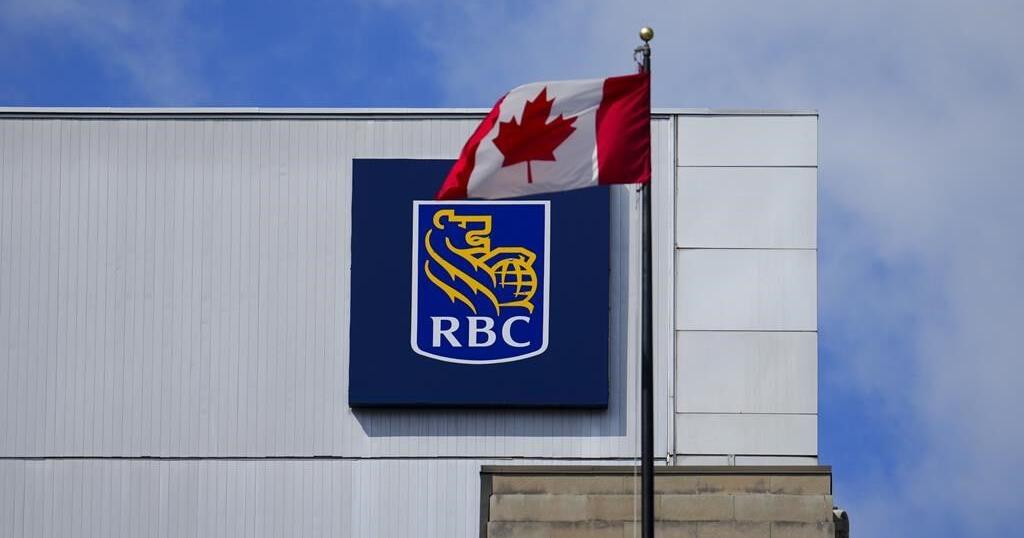TORONTO – Shares of Royal Bank of Canada and National Bank hit all-time highs on Wednesday as the two banks reported earnings that topped expectations.
Both banks reported notable revenue growth despite the economic headwinds that helped push profits higher, while RBC also reported much lower-than-expected loan loss provisions.
RBC reported a third-quarter profit of $4.49 billion, up from $3.86 billion a year earlier, boosted in part also by $239 million from the HSBC Canada acquisition it completed in March.
“While there’s a higher degree of geopolitical uncertainty and volatility, our diversified businesses are well positioned for the macro driven shifts in the operating environment,” chief executive Dave McKay said on an earnings call Wednesday.
He said the bank is doing well enough that it expects to increase share buybacks in the coming quarters.
On an adjusted basis, RBC says it earned $3.26 per diluted share, up from an adjusted profit of $2.83 per diluted share a year ago.
Earnings were well above the average of $2.97 per share that analysts had expected, according to LSEG Data & Analytics.
The beat helped push up RBC’s share price by a little over three per cent to more than $161 in early afternoon trading on the Toronto Stock Exchange, up more than 30 per cent from a year ago. That gave the company a market capitalization of close to $221 billion.
RBC’s revenue totalled $14.63 billion, up from $12.98 billion a year ago, while the bank’s provision for credit losses for the quarter amounted to $659 million, up from $616 million in the same quarter last year.
While the bank set aside more money in total, the proportion of loans under provision fell 0.02 percentage points from last year and 0.14 percentage points from the previous quarter.
The 0.27 per cent of loans the bank is concerned about was well below the 0.38 per cent expected by analysts, helping lead to the strong earnings beat.
“Credit was a standout for Royal, with provisions coming in well below expectations,” said Jeffries analyst John Aiken in a note.
The credit performance is in sharp contrast to some other banks that have reported so far, such as BMO, where worsening provisions weighed heavily on results.
RBC chief risk officer Graeme Hepworth did, however, caution that the bank is still seeing borrower stress with more expected ahead. The better performance in the quarter was more related to wholesale, both in capital markets and its City National segments, compared with previous quarters.
“I wouldn’t read that into a definitive indication that we’ve now turned the corner … the trends in retail are still negative,” he said.
He said the bank is seeing rising stress across almost all products and expects it to continue into 2025 as unemployment rises and more consumers renew their mortgages at higher rates.
“We still see a consumer who faces a lot of headwinds with the current rate environment … those are all factors that leave us still quite cautious through the end of this year and going into next year.”
National Bank also warned that there is still uncertainty ahead while reporting a third-quarter profit of $1.03 billion, up from $830 million a year ago.
Revenue for the quarter totalled $3.00 billion, up from $2.49 billion in the same quarter last year.
On an adjusted basis, National Bank says it earned $2.68 per diluted share in its most recent quarter, up from an adjusted profit of $2.18 in the same quarter last year.
The average analyst estimate had been for an adjusted profit of $2.49 per share, according to LSEG Data & Analytics.
“These results reflect our diversified earnings mix and solid credit profile,” said National Bank chief executive Laurent Ferreira on an earnings call Wednesday.
The results had provisions in line with expectations while the National Bank outperformed across a broad base, said Scotiabank analyst Meny Grauman in a note.
“Although NA comes into this quarter (and it has for a while now) vulnerable to missteps given that it continues to trade at a sizable premium to the group, once again it has been able to clear this (high) bar.”
The beat pushed National Bank’s share price up over five per cent to over $126 as of early afternoon trading, marking a more than 27 per cent gain from a year earlier.
The bank did warn that it expects rising unemployment to lead to higher delinquencies and impaired provisions ahead, but that the effects are softened by its focus on the steadier Quebec economy and its prudent approach to capital.
McKay also emphasized that while the bank is prepared, there is still the potential for economic turbulence ahead.
“We are in a position to absorb this volatility and continue to perform strongly going forward … but we want to make sure you’re cognizant of we haven’t landed this plane.”
This report by The Canadian Press was first published Aug. 28, 2024.
Companies in this story: (TSX:RY; TSX:NA)
